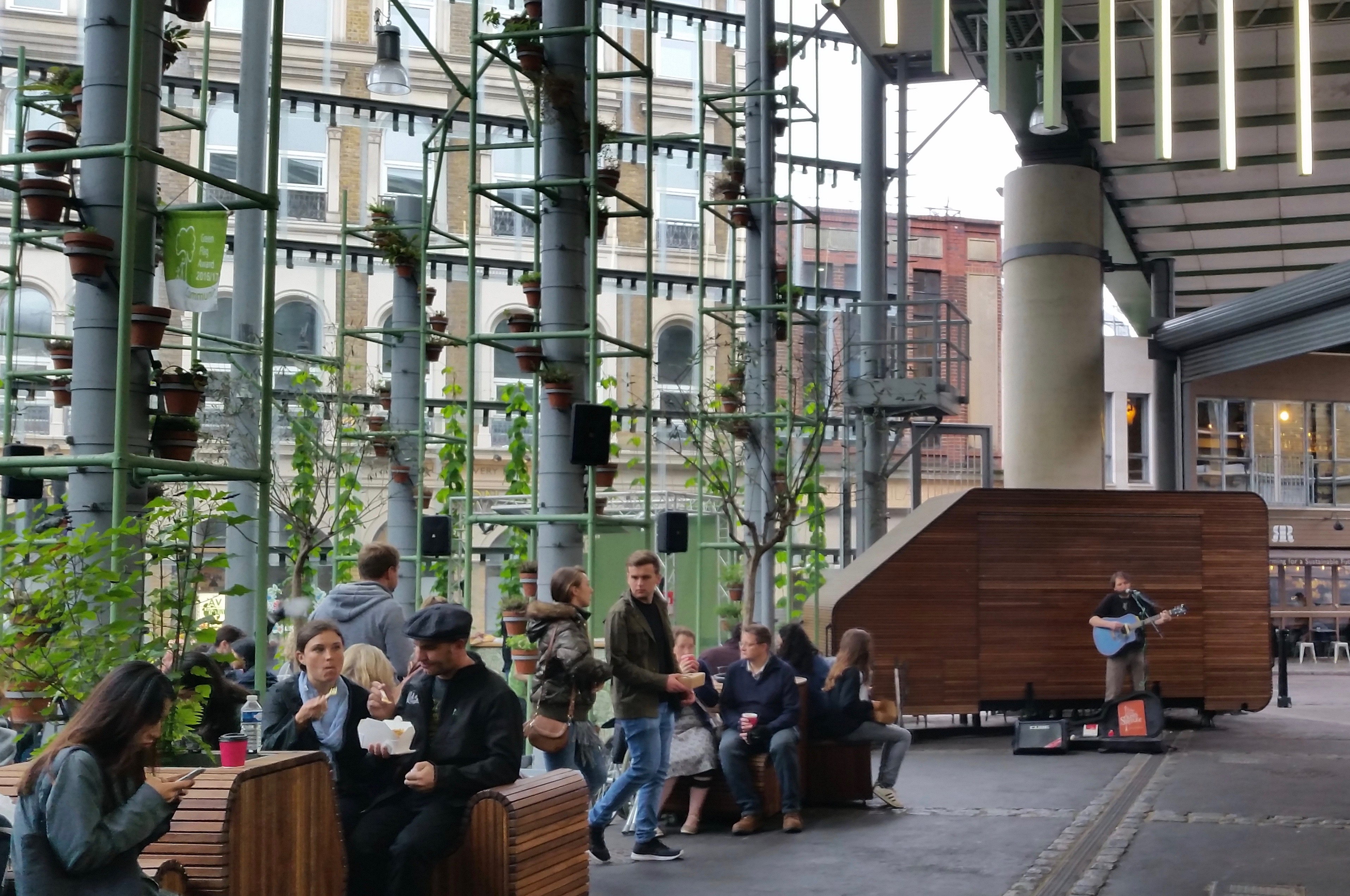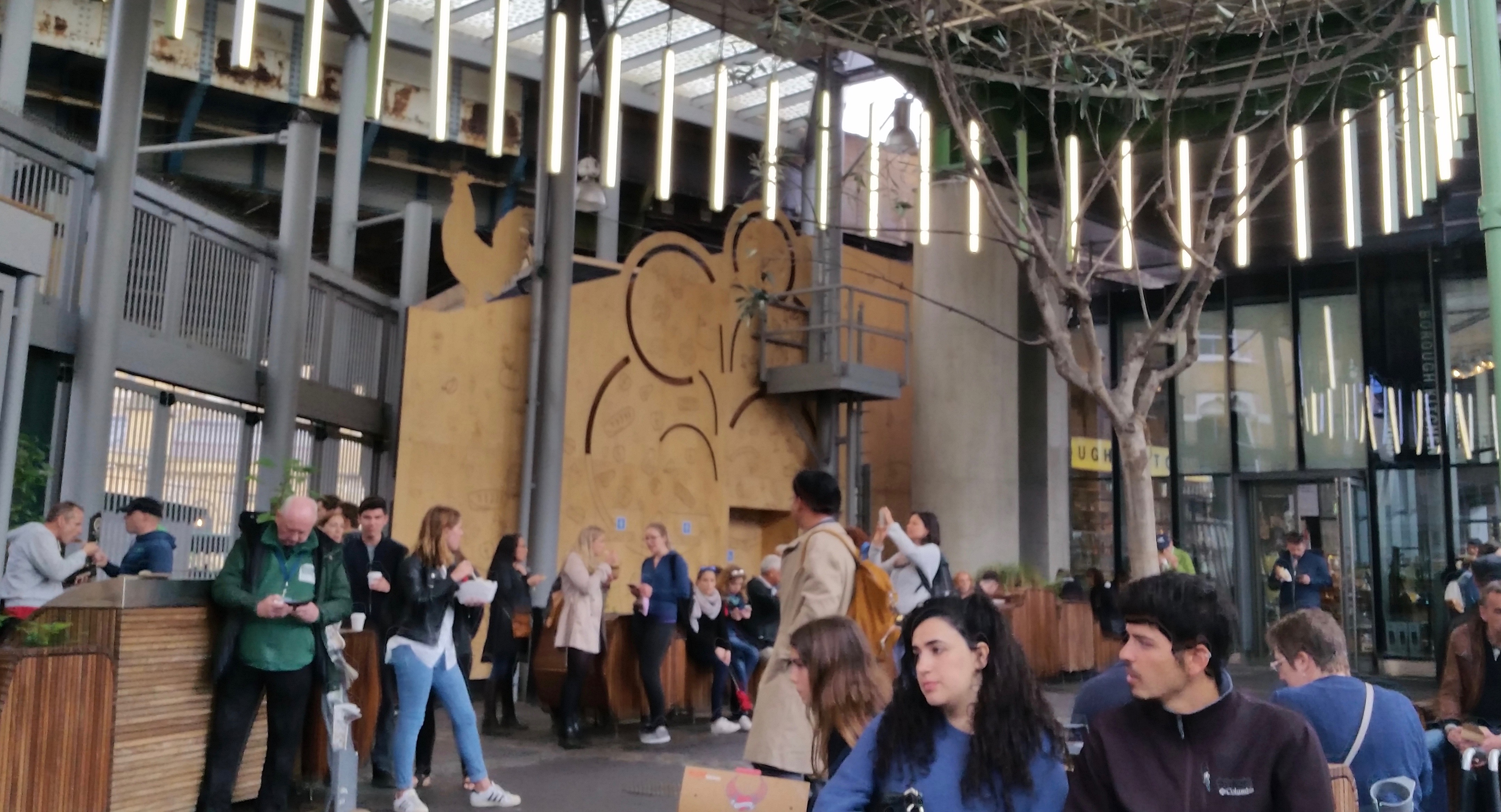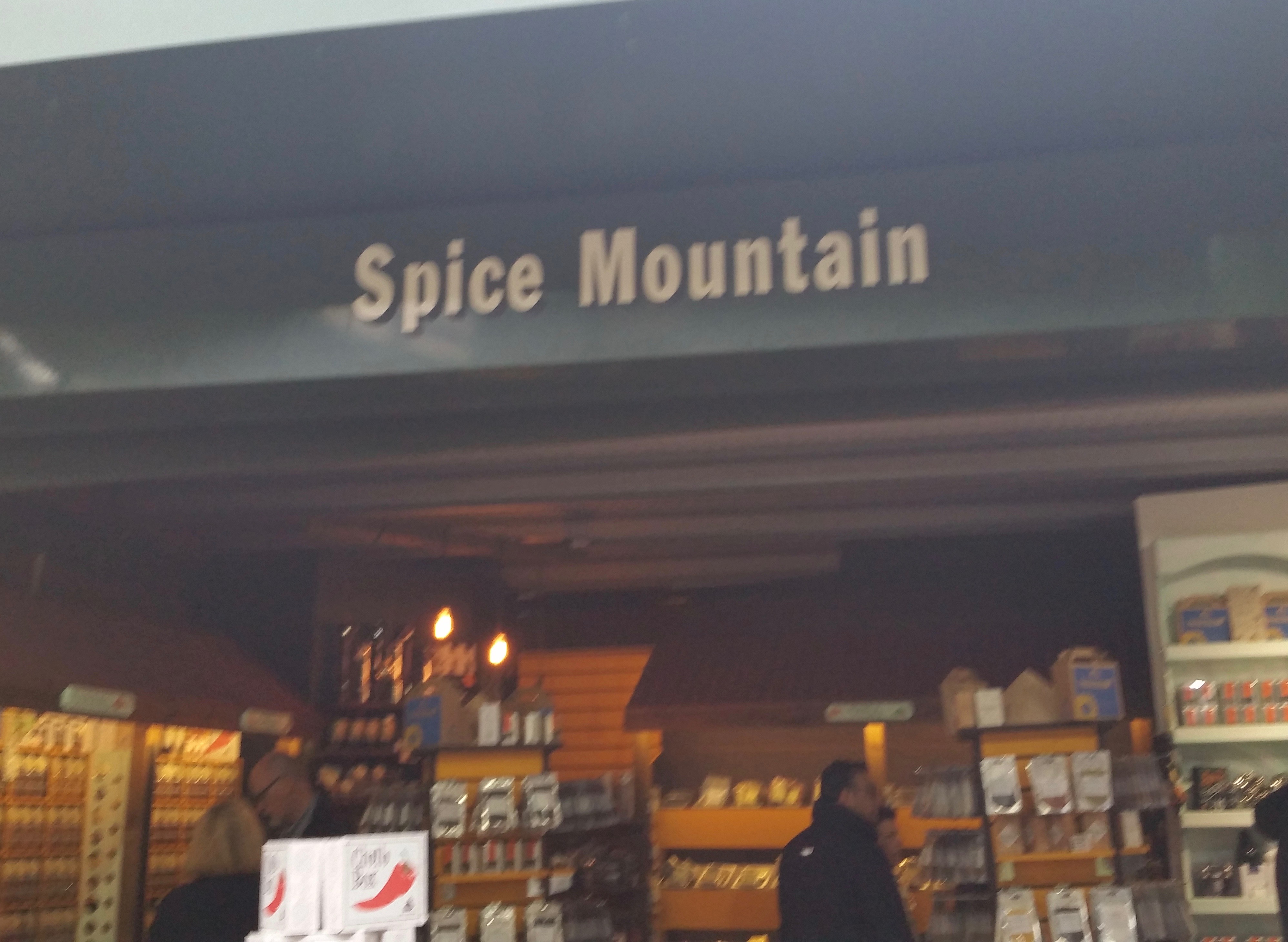Difference between revisions of "Borough Market"
From Londonhua WIKI
Vnmercouris (talk | contribs) (Created page with "=Borough Market= {{Infobox |title = Article Title |header1 = The Chandos Portrait of William Shakespeare |bodystyle = width:25em |image = File:Articlepicture.jpg|x450px|al...") |
Vnmercouris (talk | contribs) |
||
| (2 intermediate revisions by the same user not shown) | |||
| Line 3: | Line 3: | ||
{{Infobox | {{Infobox | ||
|title = Article Title | |title = Article Title | ||
| − | |||
| − | |||
|bodystyle = width:25em | |bodystyle = width:25em | ||
| − | |image = [[File: | + | |image = [[File:Borough Market 1 2.jpg|x450px|alt=Article Image]] |
| − | |caption = | + | |caption = Some stalls in the market |
|label2 = '''Artist''' | |label2 = '''Artist''' | ||
| − | |data2 = Attributed to | + | |data2 = Attributed to Victoria Mercouris |
| − | |||
| − | |||
|label4 = '''Dimensions''' | |label4 = '''Dimensions''' | ||
|data4 = 55.2 cm × 43.8 cm ( 21 3⁄4 in × 17 1⁄4 in) | |data4 = 55.2 cm × 43.8 cm ( 21 3⁄4 in × 17 1⁄4 in) | ||
|label5 = '''Location''' | |label5 = '''Location''' | ||
| − | |data5 = | + | |data5 = Borough Market |
| + | 8 Southwark St, London | ||
| + | SE1 1TL | ||
<!--Add/Delete the label/data pair lines as needed--> | <!--Add/Delete the label/data pair lines as needed--> | ||
}} | }} | ||
| − | |||
| − | |||
| − | |||
=Overview= | =Overview= | ||
| − | + | Borough Market is London’s oldest food market and has been serving the people of Southwark for 1,000 years. But this is not a museum piece—it is a dynamic, ever-changing institution; a participant in the wider debates around what we eat and where it comes from; a place where food is talked about almost as enthusiastically as it is consumed. | |
<br><br> | <br><br> | ||
__TOC__ | __TOC__ | ||
<br> | <br> | ||
| − | = | + | =History= |
<br> | <br> | ||
| − | + | Borough Market has for about 1,000 years, while it is impossible to pin down a start date the best date available, and the one used as the basis for the Market’s millennium celebration, is 1014. Borough, then as now, was a place defined by its position at one end of London Bridge. London bridge, a colorful and chaotic artery joining London to the town of Southwark and the ports and cities of the south, acted like a magnet for people who wished to sell things to travelers. Its rich commercial potential kicked off an epic struggle between authorities determined to regulate and profit from officially sanctioned markets and hordes of small traders who wanted to make as much money as possible with the least possible interference. For a long time there were two legitimate marketplaces around Borough. The smaller of these started in the grounds of St Thomas’ Hospital, at the southern entrance to London Bridge. In 1215, the hospital relocated to what is now St Thomas’ Street, and the market, which specialized in corn, moved with it. In 1406, after some serious lobbying, Henry IV granted the City authorities “assay and assize of bread, wine, and ale and other victuals and of any other things belonging to the clerk of the market of the King’s household”. Southwark’s market became, to all intents and purposes, an extension of London. The residents of Southwark fought hard against the encroachment of the City into their town, but further charters in 1444 and 1462 cemented London’s influence over the Guildable Manor and added the right to hold a three-day fair every September. Southwark Fair would become one of the most riotous events in London’s calendar. In April 1550, for a price of just over £1,000, Edward VI ended any debate about who ran Borough by selling Southwark to the City. In the same charter, it was agreed that the market could extend to four days a week, adding Monday and Saturday to the schedule. For more information click [http://www.boroughmarket.org.uk/history here]. | |
<br><br> | <br><br> | ||
| − | == | + | ==Slow Food== |
| − | + | Slow Food is a worldwide movement that supports a low impact approach to food production, with an emphasis on localised traditions and customs. The Market is filled with traders whose approach to producing or sourcing has gained them official accreditation from Slow Food UK. Many of the products sold also been recognized by Slow Food as distinctive local foodstuffs whose survival would be at risk if it weren’t for a small number of artisans working hard to keep them relevant. | |
| − | |||
<br><br> | <br><br> | ||
| − | + | ==Environmental Commitment== | |
| + | None of the Market’s rubbish goes to landfill. All cardboard, paper, plastic, glass or wood is recycled. Borough’s participation in the FoodSave scheme run by the charity Plan Zheroes means that surplus produce from many of the stalls ends up being distributed to local charities, rather than being thrown in the bin. All remaining food waste, around 8,640 litres per week, is sent to an anaerobic digestion plant—a facility that uses microorganisms to break down organic material and turn it into power, fertiliser and water. | ||
<br><br> | <br><br> | ||
| − | + | ==Traders== | |
| + | In the market there are traders of all kinds whether your looking to buy groceries or just your next meal there is a stand for it. Some of the options include: | ||
| + | * Bakery | ||
| + | *Cafés, bars & restaurants | ||
| + | *Confectionery | ||
| + | *Cured meats | ||
| + | *Dairy & eggs | ||
| + | *Drinks | ||
| + | *Dry goods | ||
| + | *Fish & seafood | ||
| + | *Fruit & veg | ||
| + | *Hair and beauty | ||
| + | *Homewares & accessories | ||
| + | *Meat, poultry & game | ||
| + | *Oils & vinegars | ||
| + | *Olives & antipasti | ||
| + | *Plants & flowers | ||
| + | *Spices, preserves & condiments | ||
| + | *Street food | ||
| + | *Wholesale | ||
| + | <br> | ||
| + | |||
| + | <gallery> | ||
| + | Borough Market 2 2.jpg | ||
| + | Borough Market 4 2.jpg | ||
| + | Borough Market 5 2.jpg | ||
| + | </gallery> | ||
=References= | =References= | ||
| − | + | http://www.boroughmarket.org.uk | |
| − | |||
| − | |||
| − | |||
| − | |||
| − | |||
| − | |||
<br><br> | <br><br> | ||
Latest revision as of 01:52, 20 May 2017
Borough Market
 Some stalls in the market | |
| Artist | Attributed to Victoria Mercouris |
|---|---|
| Dimensions | 55.2 cm × 43.8 cm ( 21 3⁄4 in × 17 1⁄4 in) |
| Location |
Borough Market 8 Southwark St, London SE1 1TL |
Overview
Borough Market is London’s oldest food market and has been serving the people of Southwark for 1,000 years. But this is not a museum piece—it is a dynamic, ever-changing institution; a participant in the wider debates around what we eat and where it comes from; a place where food is talked about almost as enthusiastically as it is consumed.
Contents
History
Borough Market has for about 1,000 years, while it is impossible to pin down a start date the best date available, and the one used as the basis for the Market’s millennium celebration, is 1014. Borough, then as now, was a place defined by its position at one end of London Bridge. London bridge, a colorful and chaotic artery joining London to the town of Southwark and the ports and cities of the south, acted like a magnet for people who wished to sell things to travelers. Its rich commercial potential kicked off an epic struggle between authorities determined to regulate and profit from officially sanctioned markets and hordes of small traders who wanted to make as much money as possible with the least possible interference. For a long time there were two legitimate marketplaces around Borough. The smaller of these started in the grounds of St Thomas’ Hospital, at the southern entrance to London Bridge. In 1215, the hospital relocated to what is now St Thomas’ Street, and the market, which specialized in corn, moved with it. In 1406, after some serious lobbying, Henry IV granted the City authorities “assay and assize of bread, wine, and ale and other victuals and of any other things belonging to the clerk of the market of the King’s household”. Southwark’s market became, to all intents and purposes, an extension of London. The residents of Southwark fought hard against the encroachment of the City into their town, but further charters in 1444 and 1462 cemented London’s influence over the Guildable Manor and added the right to hold a three-day fair every September. Southwark Fair would become one of the most riotous events in London’s calendar. In April 1550, for a price of just over £1,000, Edward VI ended any debate about who ran Borough by selling Southwark to the City. In the same charter, it was agreed that the market could extend to four days a week, adding Monday and Saturday to the schedule. For more information click here.
Slow Food
Slow Food is a worldwide movement that supports a low impact approach to food production, with an emphasis on localised traditions and customs. The Market is filled with traders whose approach to producing or sourcing has gained them official accreditation from Slow Food UK. Many of the products sold also been recognized by Slow Food as distinctive local foodstuffs whose survival would be at risk if it weren’t for a small number of artisans working hard to keep them relevant.
Environmental Commitment
None of the Market’s rubbish goes to landfill. All cardboard, paper, plastic, glass or wood is recycled. Borough’s participation in the FoodSave scheme run by the charity Plan Zheroes means that surplus produce from many of the stalls ends up being distributed to local charities, rather than being thrown in the bin. All remaining food waste, around 8,640 litres per week, is sent to an anaerobic digestion plant—a facility that uses microorganisms to break down organic material and turn it into power, fertiliser and water.
Traders
In the market there are traders of all kinds whether your looking to buy groceries or just your next meal there is a stand for it. Some of the options include:
- Bakery
- Cafés, bars & restaurants
- Confectionery
- Cured meats
- Dairy & eggs
- Drinks
- Dry goods
- Fish & seafood
- Fruit & veg
- Hair and beauty
- Homewares & accessories
- Meat, poultry & game
- Oils & vinegars
- Olives & antipasti
- Plants & flowers
- Spices, preserves & condiments
- Street food
- Wholesale


